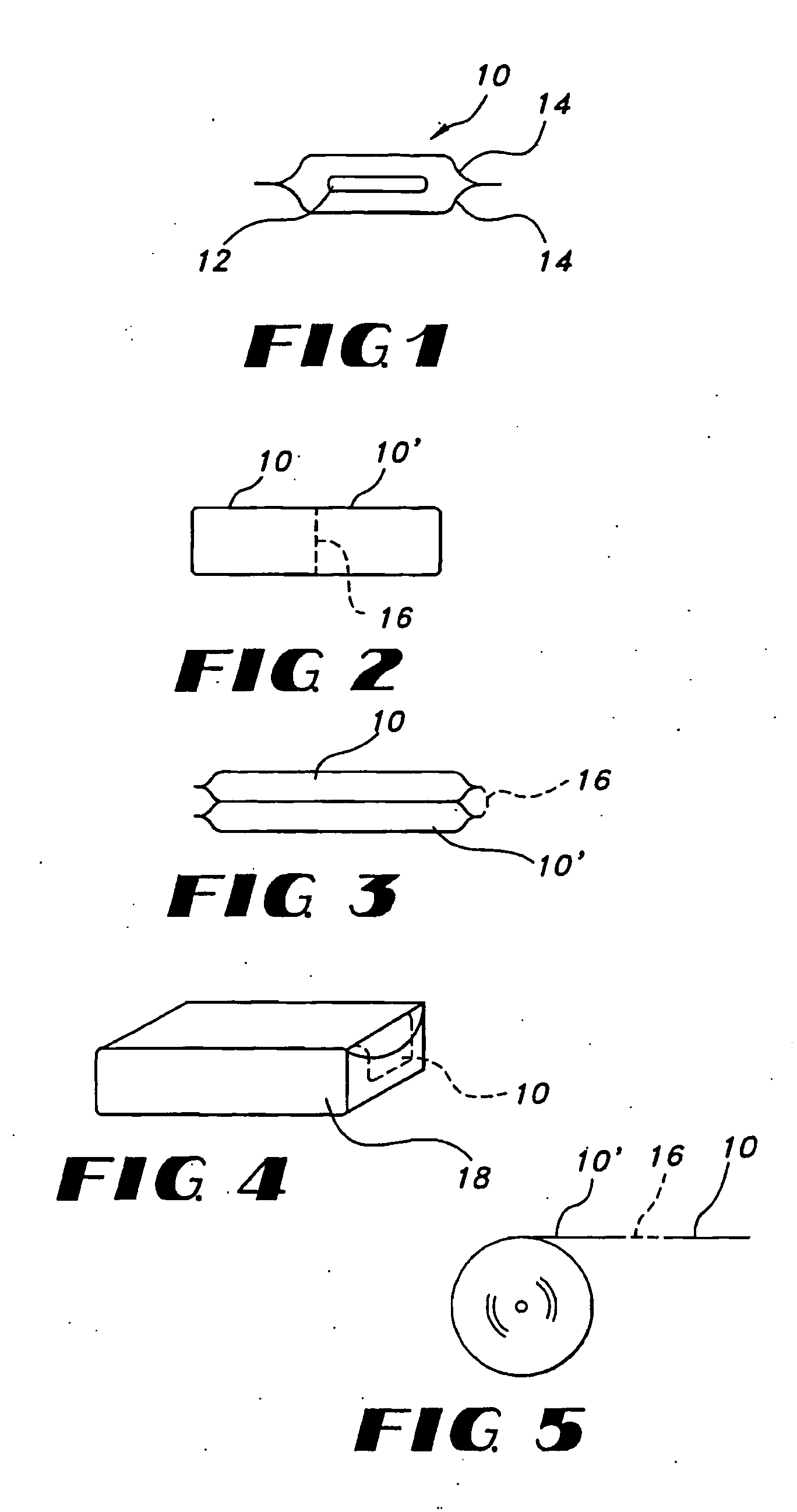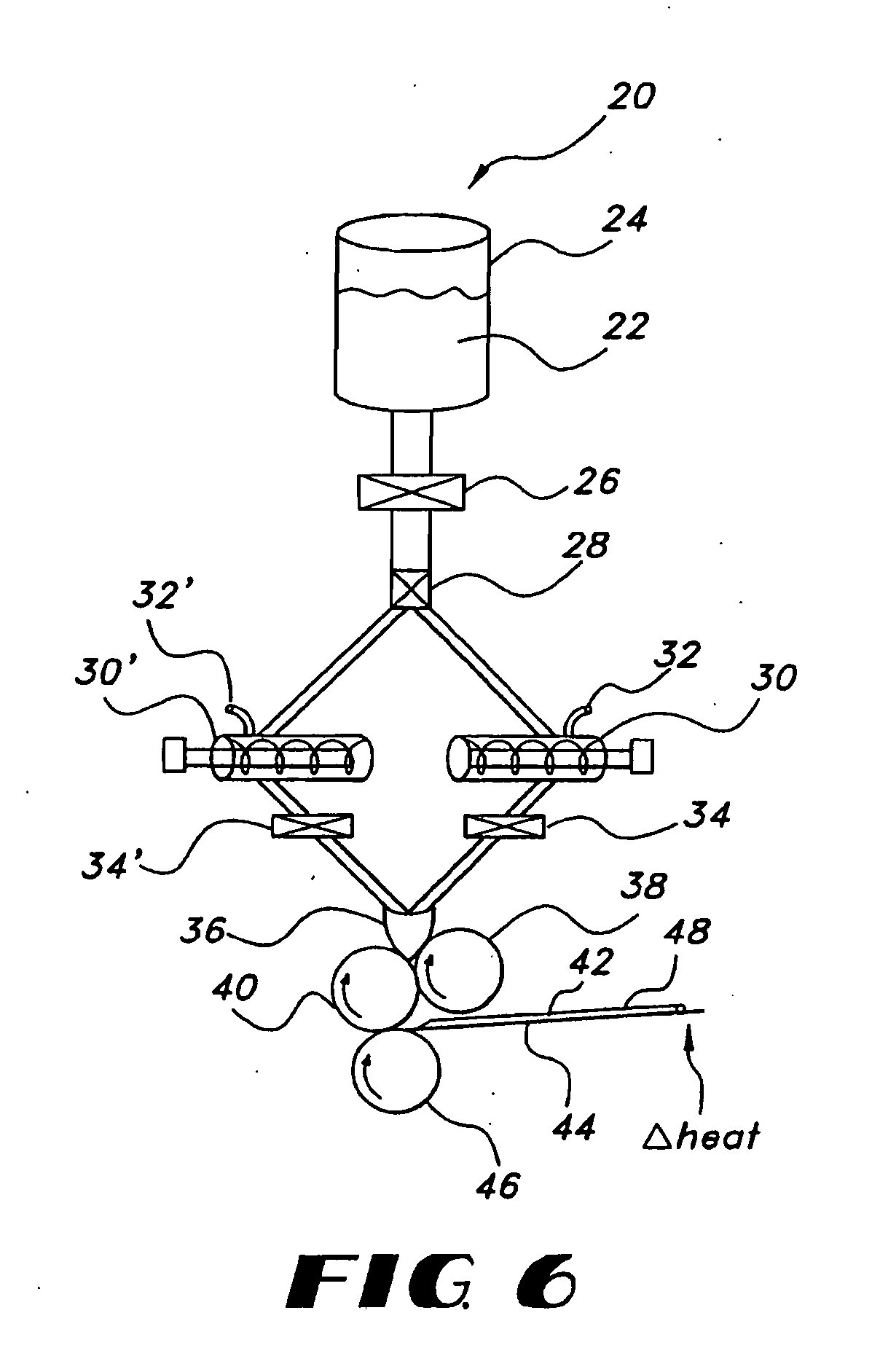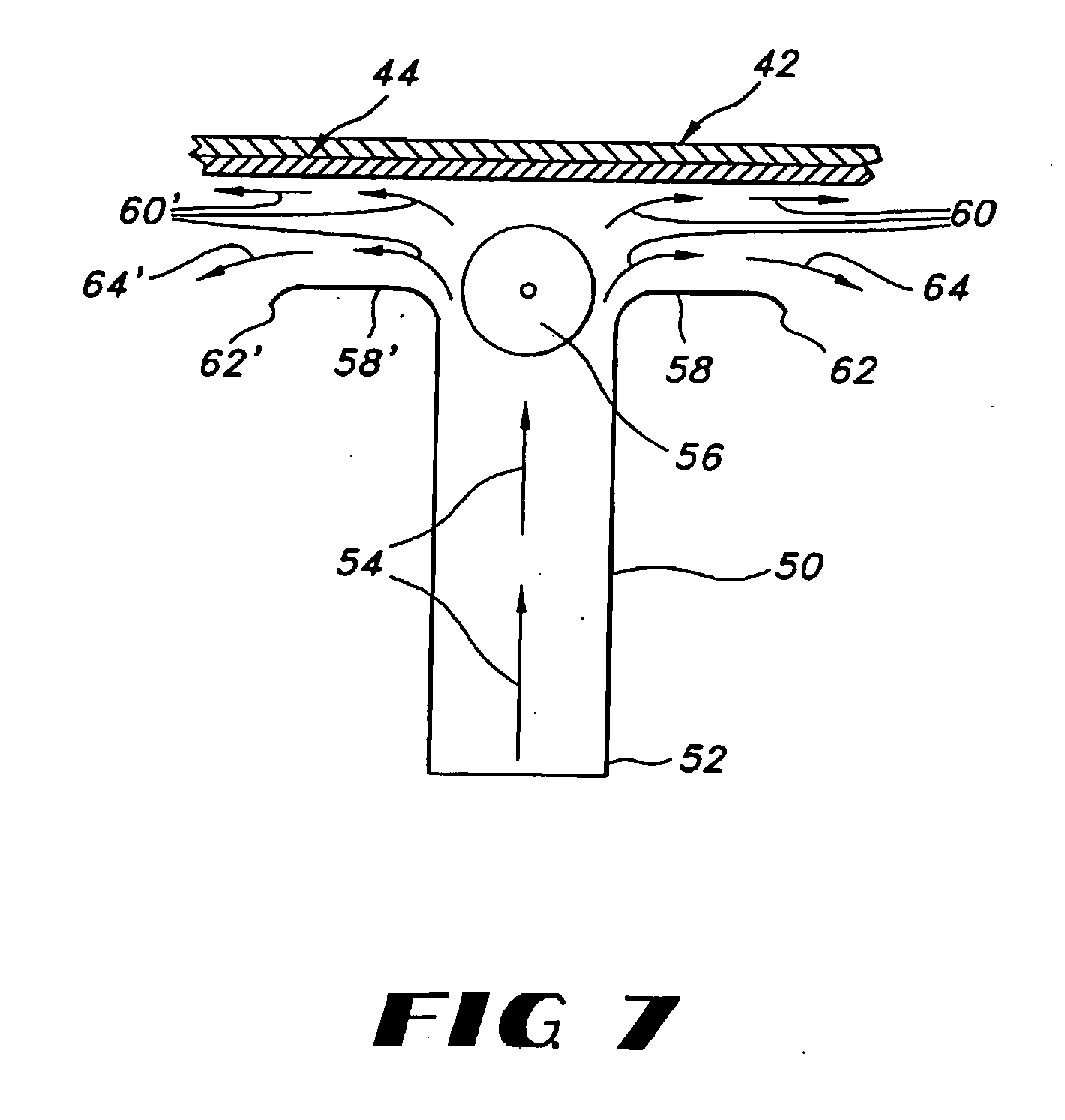Uniform films for rapid-dissolve dosage form incorporating anti-tacking compositions
- Summary
- Abstract
- Description
- Claims
- Application Information
AI Technical Summary
Problems solved by technology
Method used
Image
Examples
examples 1-2
[0161] Water-soluble thin film compositions were prepared using the amounts described in Table 1. In particular, composition 1 incorporated Vitamin E as an anti-tacking agent along with various other components. Composition 2 contained similar components to composition 1, but absent Vitamin E.
TABLE 1Weight (g unlessotherwiseindicated)Component12Polyethylene oxide2.83.5Hydroxypropyl cellulose2.83.5Polydextrose0.690.79Sucralose0.350.75Taste-Masking flavor10.070Titanium dioxide0.070.18Coated dextromethorphan (45% w / w)5.566.94Mint flavor1.261.71Vitamin E23.90WS-330.0350.044Simethicone emulsion40.0350.09Water19.4932.5Blue food color4 drops5 drops
1Magna Sweet, available from Mafco Worldwide Corp.
210% solution containing 0.39 g Vitamin E and 3.51 g water
3N-Ethyl-p-menthane-3-carboxamide cooling agent, available from Millennium Chemicals
4Available from Sentry
[0162] The above components for each composition were combined by mixing until a uniform mixture was achieved, and then cast int...
examples 3-243
Examples 3 - 243
[0167] Water-soluble thin films were prepared incorporating silica and magnesium stearate as anti-tacking agents in the amounts described in Table 2. More specifically, various combinations of silica and magnesium stearate were incorporated into a variety of different film compositions as shown in the table below.
TABLE 2MagnesiumSilica1stearateExampleFilm description(weight %)(weight %)3SOURS1.52.04SOURS1.52.05SOURS1.52.06SOURS1.52.07SOURS1.52.08SOURS1.52.09SOURS1.52.010SOURS1.52.011SOURS1.52.012SOURS1.52.013SOURS1.52.014SOURS1.52.015BENZOCAINE / MENTHOL1.51.516BENZOCAINE / MENTHOL1.51.517BENZOCAINE / MENTHOL1.51.518BENZOCAINE / MENTHOL1.51.519BENZOCAINE / MENTHOL1.51.520SOURS22.521SOURS1.5222SOURS1.5223SOURS1.5224SOURS1.5225SOURS1.5226SOURS1.5227SOURS1.52.528SOURS1.52.529SOURS1.52.530SOURS1.52.531SOURS1.5232SOURS1.5233SOURS1.52.534SOURS1.52.535SOURS1.52.536SOURS1.52.537SOURS1.52.538SOURS1.52.539SOURS1.52.540SOURS1.52.541ENERGY / WELLNESS SUPPLEMENT21242ENERGY / WELLNESS SUPPLEM...
examples 244-300
Examples 244- 300
[0184] Water-soluble thin films were prepared incorporating silica and magnesium stearate as anti-tacking agents in the amounts described in Table 17. More specifically, various combinations of silica and magnesium stearate were incorporated into a variety of different film compositions as shown in the table below.
TABLE 17MagnesiumSilica1stearate (weightExampleFilm description(weight %)%)244SOURS1.52.5245ENERGY / WELLNESS0.751SUPPLEMENT2246ENERGY / WELLNESS0.751SUPPLEMENT2247MELATONIN12248MELATONIN1.51.5249CHLORINE DIOXIDE1.51.5250MELATONIN1.51.5251MELATONIN1.51.5252MELATONIN1.51.5253MELATONIN1.51.5254CHLORINE DIOXIDE1.51.5255MELATONIN1.11.3256MULTIVITAMIN11257MULTIVITAMIN11258B COMPLEX VITAMIN11259MULTIVITAMIN11260B COMPLEX VITAMIN11261COLD & COUGH11262MULTLVITAMIN11263MULTIVITAMIN11264MULTIVITAMIN11265MULTIVITAMIN266MULTIVITAMIN267MULTIVITAMIN268MULTIVITAMIN11.5269IMMUNE BOOSTER1.161.16270MULTIVITAMIN11271ENERGY / WELLNESS11.5SUPPLEMENT2272MULTIVITAMIN11.5273MULTIVITA...
PUM
| Property | Measurement | Unit |
|---|---|---|
| Fraction | aaaaa | aaaaa |
| Percent by mass | aaaaa | aaaaa |
| Percent by mass | aaaaa | aaaaa |
Abstract
Description
Claims
Application Information
 Login to View More
Login to View More - R&D
- Intellectual Property
- Life Sciences
- Materials
- Tech Scout
- Unparalleled Data Quality
- Higher Quality Content
- 60% Fewer Hallucinations
Browse by: Latest US Patents, China's latest patents, Technical Efficacy Thesaurus, Application Domain, Technology Topic, Popular Technical Reports.
© 2025 PatSnap. All rights reserved.Legal|Privacy policy|Modern Slavery Act Transparency Statement|Sitemap|About US| Contact US: help@patsnap.com



